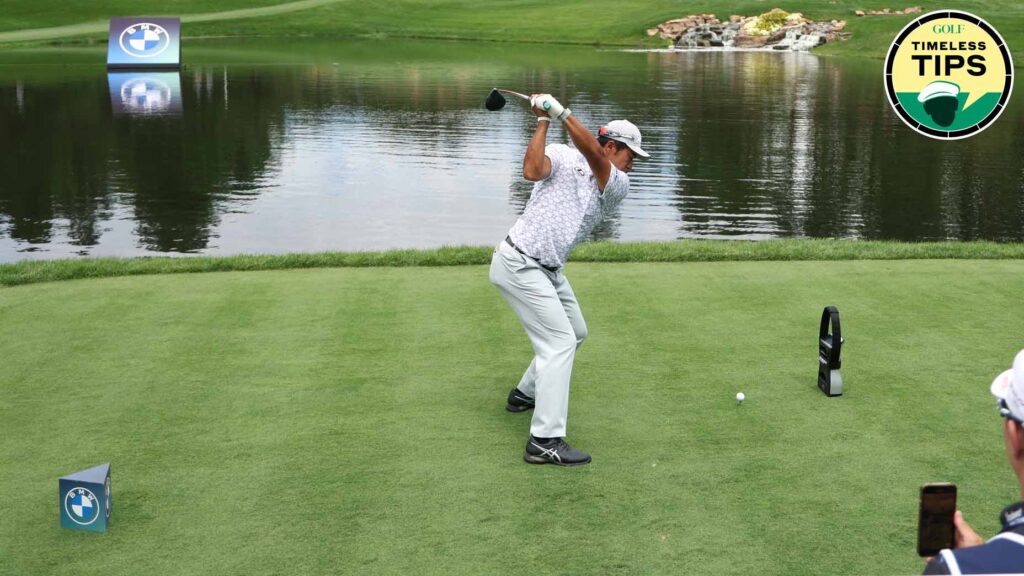Golf instruction has always focused on adding distance to tee shots, and in the current era of golf, power is essential for competing at the highest levels. The obsession with hitting the ball longer has been a constant throughout the history of the game. In a throwback to the November 1979 issue of GOLF Magazine, legendary instructor Phil Ritson shared seven tips on how to hit the ball harder. These timeless tips provide essential guidance for golfers looking to improve their power game.
The first key to hitting the ball with power is to keep the left hand straight at address. The angle set in the left hand, known as the “straight” position, is crucial for gripping the club in a powerful manner. This straight position ensures that the left hand remains stable throughout the swing, preventing over-swinging and loss of control. By focusing on maintaining this position from address to follow-through, golfers can generate more power in their shots.
Turning both shoulders is another essential element in generating power in the golf swing. Completing the backswing by engaging both shoulders allows for a full wind-up and sets the stage for a powerful downswing. By avoiding the common mistakes of only using the hands and arms or overemphasizing the left shoulder, golfers can achieve a smoother and more powerful swing.
Shifting weight to the inside of the right heel during the backswing is a key power move that can be practiced by placing a ball under the little toe of the right foot. This exercise helps golfers feel the proper weight shift and prevents swaying during the swing. By coiling the body around the right knee and maintaining balance on the balls and heels of the feet, golfers can optimize their power potential.
The “waiter’s tray” position of the right arm at the top of the swing serves as a checkpoint for a powerful downswing. This position allows for a more efficient underarm move in the downswing, similar to throwing a ball underhand. By folding the right arm into the correct position during the backswing, golfers can execute a smoother transition and generate more power through impact.
One of the greatest power moves in golf is the separation of the legs during the downswing. By initiating the lateral movement of the left knee down the feet line, golfers can shift weight to the outside of the left foot and create leverage for increased clubhead speed. Keeping the left knee flexed through the ball prevents loss of control and ensures a powerful strike.
Avoiding conscious rotation of the hands and wrists in the swing is crucial for maintaining control and generating power. Instead of actively rotating the hands, golfers should focus on a correct release by allowing the left forearm to turn over naturally. By accelerating through the shot with proper hand and wrist positioning, golfers can maximize their power potential without sacrificing control.
Allowing the head to rotate freely during the follow-through is essential for generating maximum power in the golf swing. Rather than trying to keep the head down, golfers should focus on a smooth rotation of the head with the shoulders. By laying the right ear on an imaginary pillow during the swing, golfers can ensure a free follow-through motion and optimize their power output.
In conclusion, the timeless tips shared by Phil Ritson in the November 1979 issue of GOLF Magazine provide essential guidance for golfers looking to add distance to their tee shots. By focusing on key elements such as hand position, shoulder turn, weight shift, arm position, leg separation, and head rotation, golfers can develop a powerful and efficient swing. Practicing these fundamental principles with dedication and consistency can lead to significant improvements in driving distance and overall performance on the course.


